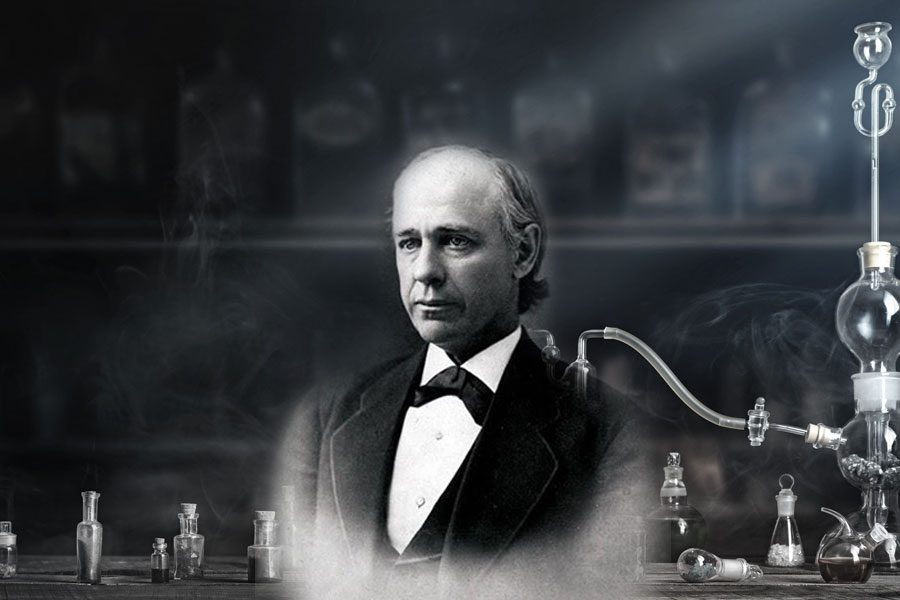Hydrogen A to Z Series: J For Johnston
By: GenH2 Staff
Read Time: 3 minutes
Defining The Hydrogen Economy From A to Z: J is Herrick L. Johnston
Continuing in our Defining the Hydrogen Economy series, today we have reached the letter J and will be delving into the history of a liquid hydrogen legend: Herrick L. Johnston.
Herrick L. Johnston (1898-1965) was a scientist, educator, entrepreneur, and a pioneer in the science and technology of liquid hydrogen. Born in Jacksonville, Ohio, Johnston first made a name for himself at the University of California at Berkeley as an associate of cryogenics pioneer William Giauque, when his experiments proved the existence of oxygen isotopes with atomic masses 17 and 18. When Giauque was later awarded the 1949 Nobel Prize for chemistry for this work, he made sure to recognize Johnston’s contribution.
However, Johnston decided to seek greater benefit for his expert knowledge of cryogenics. Johnston was appointed to Ohio State University (OSU), where he created and oversaw the construction of the War Research Building, a cryogenics laboratory completed at the end of 1942 where the first liquid hydrogen was produced in February 1943. In the 1950-1951 period, Johnston supplied the Los Alamos Scientific Laboratory with two hydrogen liquefiers. When the US acquired the Marshall Islands from Japan in World War II, it was decided that the remote location and sparse population made it the ideal place to conduct thermonuclear tests.
During the crucial 1950-1954 period, he simultaneously pursued three careers-scientist, educator, and businessman-all involved liquid hydrogen. Johnston focused on developing a business in cryogenics equipment and was given the contract to reassemble the old Aerojet liquefier and add a second one. He chose Gwynne A. Wright to head the team to do this and the next two years became a period of swiftly moving activity for all of them. In May 1951, the first thermonuclear test, Operation Greenhouse, was successful and not long after it, preparations began for the next test. By late 1951, Johnston was so involved that he wrote to the president of OSU requesting that: (1) his services to the university be reduced to 25 percent of full load, effective 1 January 1952, (2) selected members of the cryogenics laboratory be given leaves of absence; (3) OSU shop facilities be allowed to continue their work for Los Alamos; and (4) air and hydrogen liquefiers be made available for an essential training program. He was off and running again, doing very high priority work for the government, and the university had little choice but to go along with his wishes.
In 1952, Johnston set himself up in business as the H. L. Johnston Company, Inc., and lured some of the key people from the OSU cryogenics laboratory. In May, the graduate school notified him that the Johnston’s name would be removed from the list of faculties approved to advise graduate students for masters and doctoral degrees. It was protested vigorously, and in December Johnston was joined by seven students who petitioned to retain him as their preceptor. During this period, and working against odds, Johnston and his men delivered on their promise to produce deuterium on Eniwetok for the Mike Event of Project Ivy. On November 1, 1952, the event took place and was the first test of a thermonuclear “device”.
Johnston was colorful, unconventional, and controversial. Although he had a reputation for working himself and his staff hard, Johnston was admired by students and inspired great loyalty. Gwynne Wright remained with him for 16 years. One of his PhD students, Paul J. Flory, who won the Nobel Prize for chemistry in 1974, cited Johnston’s ‘boundless zeal’ as an inspiration.
Interestingly, the beginnings of the liquid hydrogen (LH2) industry are rooted in thermonuclear weapon development of the early 1950s. These developments then gave way to LH2 use in the space program. Johnston’s work paved the way. As seen with Johnston, cryogenics and especially LH2 takes dedication, perseverance, and a vision for the future.



